Interview of Jess Beagley, who leads The Global Climate and Health Alliance’s policy work, including raising the profile of health in UNFCCC negotiations, assessing Nationally Determined Contributions as key components of a healthy and sustainable recovery, working with national partners on local policy processes, and research and analysis to support GCHA’s campaign asks on fossil fuel phase out and other issues.
1. For the first time, an official Health Day is included in the COP agenda. What are your expectations for this event? What would success look like?
So, I think the first thing to say is that Health Day is an incredible opportunity to raise awareness of the links between health and climate change. We’re not seeing those links be reflected in the UNFCCC space, and having a health day at COP is a first step to be able to work towards that. I think it’s important to say that Health Day in itself won’t solve the issue of whether or not climate action is sufficient to protect health. Health day will set the theme for some of the events and side events that take place on the 3rd of December but we don’t necessarily see that filter through into the negotiations – and that’s the space where we’ll really need to be integrated to make sure that we’ve got healthy climate decision making and healthy climate action.
So, in terms of what we really want to see on health day, of course we need events that appeal not only to the health community, but also to the wider climate community, so that there is that chance for members of communities and sectors to interact and start conversations about how to collaborate across sectors and communities, so that we can and go away after COP and coordinate than we’ve been able to do before. But crucially, we want the momentum and the interest that is generated by Health Day to really be picked up by parties and for them to take those priorities and that thinking into negotiations – to make commitments, and then to implement them.
2. When we talk about development policies and funding, we’re often faced with sectoral siloes, a typical case in point being “health vs. climate”. Your Healthy NDC scorecard analysis assesses the extent to which governments’ national climate commitments recognise and respond to the abundant linkages with health. It shows many countries are fully committed to integration. What are the key lessons from this analysis?
Yes, this analysis shows us that over 90% of NDCs include some level of health considerations. Normally that’s in terms of health impacts or action that is needed to adapt to the growing health threats of climate change, and the biggest gaps that we’re seeing are around whether or not there is finance to implement some of these actions. There’s also not much in terms of consideration of the returns on investment that healthy climate action could yield. We know that this would be really key for building the case and for more adequate financial resources to support climate action. Some of the other areas where we have not seen as much pickup in nationally determined contributions as might be ideal, is around the co-benefits of mitigation.
In transitioning from fossil fuels to renewable energy, there are widespread improvements in air quality. This can reduce morbidity and mortality from a number of different health conditions, mostly non communicable diseases, or from transitioning from private motorised vehicles to public transport and to walking and cycling which would increase physical activity, again reducing the risk of noncommunicable diseases. And then, in the agriculture and food sector, transitioning to sustainable healthy diets that are rich in plants and much lower in meat and processed foods.
3. A recent report on Improving Investment in Climate Change and Global Health shows that investments in the health sector by climate funds are close to zero, despite a clear opportunity for both large scale climate adaptation and mitigation projects in the health sector. How do you explain this? And what can be done to reverse this trend?
I think when we’re thinking about finance, it’s really key to be aware that there are multiple communities that are seeing climate finance as the answer to their own shortfalls in resources. But we know that there’s not enough climate finance in the world. We also know there’s not enough health finance in the world to be addressing the challenges that we’re seeing. So the first thing is that we need more finance for climate, and for health.
In the meantime, it’s important to think about how we can use that limited funding more strategically, so thinking about which investments might have high health returns, whether or not they’re in the health sector – investing climate finance in resilient sanitation will protect people from water-borne disease, for example; investing health finance in solar panels and batteries in rural healthcare facilities will help to mitigate climate change, while ensuring better continuity of service delivery. We should be asking ourselves two questions – how can we maximise the health gains of climate finance, and how can we maximise the climate gains of available health finance?
It’s also really key to think about where the resources for any announcements of finance for climate and health is being reallocated from: ideally it would be new and additional finance, but just as an example, if finance is taken out of projects for resilient agriculture, and put into resilient health systems, we are just going to be increasing the burden that falls on the health system because of malnutrition. So we need to be calling for climate and health finance that really does take a holistic approach to health.



